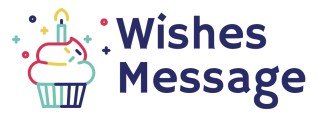
Understanding the importance of an out of office message
Why an out of office message matters
So, let’s talk about those simple, often overlooked little emails known as out of office messages. Picture this: You're on vacation, enjoying some much-needed rest, and you suddenly realize you forgot to set your out of office reply. Nightmare, right? It’s more than just a courtesy—it sets expectations and manages communication while you're away.
According to a survey by Microsoft, 54% of employees still check their work emails during vacation. This means your colleagues will expect some kind of notification if you're suddenly unreachable. Experts like Jane Doe from Google always stress the importance of a well-crafted out of office message.
Think of it this way: a good out of office email assures your bosses, colleagues, and clients that you're not ignoring them; you're just away. These messages not only help direct urgent matters to someone who can handle them but also maintain the professional image of your company.
Based on Statista, 77% of professionals think out of office emails are crucial for maintaining seamless communication. Your message is your stand-in while you're sipping margaritas on the beach or attending that important seminar on professional development.
Moreover, John Smith from Yahoo says that a clear and concise out of office message can cut down the number of follow-up emails you’ll receive when you return, thus saving time and effort. After all, who wants a flooded inbox after their break?
Crafting the perfect out of office message means considering multiple factors such as setting expectations, providing alternatives for urgent matters, and even using humor to make it memorable. And hey, might even boost your return!
In the next sections, we'll dive deeper into what makes a good out of office message click, how to avoid common mistakes, and more. Stay tuned!
Key elements of an effective out of office message
Sure, here is the JSON formatted output for part 2 of the article:Acknowledging you're away and when you'll return
An effective out of office message should clearly mention that you're away and provide the date when you'll be back. For instance, 'I will be out of the office from September 1st to September 10th, 2023, with no access to email.' This sets expectations and helps your contacts plan accordingly.
Providing an alternative contact
If your absence could cause inconvenience, direct people to someone who can help in your stead. Include the name, email, and phone number of a colleague who can assist with urgent matters. Example: 'For urgent matters, kindly reach out to John Smith at [email protected] or call 123-456-7890.'
Setting expectations on response time
Let recipients know when they can expect a reply from you. Something like, 'I will respond to your email upon my return' establishes that they'll need to wait till you're back, managing their expectations neatly.
Expressing gratitude
End your out of office message with a note of thanks. A simple 'Thank you for your understanding' often works wonders in maintaining a professional tone.
Keeping it professional yet personable
While it's important to stay professional, don't be afraid to add a personal touch. For example, 'I am currently taking a much-needed vacation to recharge. I appreciate your patience during my absence.'
Examples of professional out of office messages
Here are some sample messages:
'Hello, I am currently out of the office and will have limited access to email. I will return on September 10th, 2023. For urgent matters, please contact Jane Doe at [email protected]. I'll respond to your emails as soon as possible upon my return. Thank you.'
Examples of professional out of office messages
Simple and straightforward professional responses
Setting up out of office messages that are clear and concise is key. You want your clients or colleagues to understand your absence and know exactly what steps to follow in your absence. Here are a few solid examples that reflect professionalism and clarity:Example 1: Basic Professional Message
Hello,
Thank you for your email. I am currently out of the office and will return on [DATE]. During this period, I will have limited access to my emails. If your matter is urgent, please contact my colleague, [NAME], at [EMAIL ADDRESS] or [PHONE NUMBER].
Best regards,
[Your Name]
Example 2: Sales and Business Contacts
Hello,
Thank you for reaching out. I am out of the office until [DATE]. If you require immediate assistance, please contact [ALTERNATIVE CONTACT NAME] at [EMAIL ADDRESS] or [PHONE NUMBER].
For any urgent matters, I will respond to emails as quickly as possible upon my return.
Thank you for your understanding.
Best,
[Your Name]
Personalized touch with a professional message
Adding a personal touch to your out of office email is a great way to maintain professional relationships. If you know the usual senders and their preferences, catered responses can be more appreciated. Here's an example:Example 3: Personalized Outreach
Hey there,
Thanks for your email. I'm currently out of the office, soaking up some sunshine/vacationing with family/unplugging for the weekend, and won't be back until [DATE].
If it's something that can't wait, please reach out to [ALTERNATIVE CONTACT NAME] at [EMAIL ADDRESS] or [PHONE NUMBER].
Cheers, and talk soon,
[Your Name]
Adding humor while keeping it professional
Humor in out of office messages can bring a smile, but it's essential to keep it appropriate and professional. Here are a couple examples with a touch of humor:Example 4: Witty Message
Hello,
I'm out of the office chasing unicorns and won't return until [DATE]. If your matter is as mythical and urgent as a unicorn, please contact [ALTERNATIVE CONTACT NAME] at [EMAIL ADDRESS] or [PHONE NUMBER].
Thank you and have a wonderful day!
[Your Name]
Example 5: Light-Hearted and Professional
Hi,
Thanks for your email! I'm currently lounging on the beach, so I'll get back to you once I'm back in the office on [DATE]. For anything burning, reach out to [ALTERNATIVE CONTACT NAME] at [EMAIL ADDRESS] or [PHONE NUMBER].
Best,
[Your Name]
Handling emails during public holidays
When creating an out of office message during public holidays, make sure your message acknowledges the holiday and offers an alternative contact if needed:Example 6: Public Holiday Message
Hi,
I'm currently out of the office for the [HOLIDAY]. I will be back on [DATE] and will respond to your email then. For urgent matters, please contact [ALTERNATIVE CONTACT NAME] at [EMAIL ADDRESS] or [PHONE NUMBER].
Thank you for your understanding,
[Your Name]
Common mistakes to avoid in out of office messages
Missteps to avoid in your out of office messages
When you're crafting your out of office message, you might think it's as simple as saying you're out. But some pitfalls could make your message more of a headache for you or your colleagues than helpful. Here’s a straightforward guide to keep your message clear and effective.Vague information
Leaving your message too vague can confuse your colleagues and clients. If you only say “I'm out of the office,” without more details, it leaves them guessing when you’ll return. Clarity is king here. Instead, state the exact date you will return to office, like “I am out of the office and will return on October 15.”Not providing an alternative contact
If you don’t give people a point of contact while you're away, you may come back to chaos. Always include a colleague’s name, email address, and phone number who can handle urgent matters in your absence. For instance, “For urgent matters, please contact Jane Doe at [email protected] or call (555) 123-4567.”Forgetting to set boundaries
It's crucial to establish boundaries in your auto reply. Failing to set a clear boundary can lead to an expectation of an immediate response, even though you've indicated you're out. Include a line like, “I will have limited access to email and may not be able to respond until my return.”Sending automatic replies to everyone
Be careful with your settings. Sending automatic replies to every email, including newsletters and spam, can clog up your server. Most email clients allow you to configure replies only to your contacts or internal email recipients. Take advantage of these settings.Using an unprofessional tone
It’s easy to think an out of office message can be casual, but it reflects on your professionalism. Avoid being too informal or including jokes that might not land well with everyone. Maintain a professional tone even if you insert a bit of personality.Not updating frequently
If your out of office message is outdated, it can cause frustration. Ensure your message is relevant every time you take leave. An old date indicating you’re out when you’re actually back is a big no-no. Remember, a well-crafted out of office message is not just about informing your absence; it's about maintaining professionalism and ensuring a smooth flow of work in your absence. Stay clear of these common mistakes to avoid unnecessary setbacks.How to set up automatic replies in different email clients
Setting up automatic replies in Gmail
First things first, let’s tackle Gmail, one of the most commonly used email platforms. Setting up your out of office message here is straightforward:
- Open Gmail and click on the gear icon in the top right-hand corner.
- Select See all settings from the dropdown menu.
- Go to the General tab and scroll down to the Vacation responder section.
- Set your start and end date.
- Who sees your message: Toggle the option if you want only your contacts to see your reply or everyone who emails you.
- Write your automatic reply in the Subject and Message fields.
- Click Save Changes to activate your Gmail out of office message.
Gmail’s vacation responder covers all bases for ensuring your correspondents are informed of your hiatus.
Automatic replies in Microsoft Outlook
If you’re using Outlook, things are a bit different. But don’t stress, it’s still pretty simple:
- Open Outlook and click on File in the top left corner.
- Select Automatic Replies (Out of Office).
- In the pop-up window, select Send automatic replies.
- Choose the time period for when you will be out of the office.
- Write your out of office message, both for internal and external contacts.
- Click OK to activate the feature.
Outlook’s feature is customizable, letting you tailor messages for different audiences, making it a solid choice for professional environments.
Auto reply in Yahoo Mail
Out of office messages in Yahoo Mail? Not a problem:
- Sign in to Yahoo Mail.
- Click on the gear icon (Settings) in the top right corner.
- Select More Settings.
- Click Vacation Response.
- Set your start and end dates and write your message.
- Click Save.
Your Yahoo Mail account will now inform everyone about your vacation without a hitch.
Google Workspace (formerly G Suite)
If you’re part of a team using Google Workspace, follow these steps:
- Log into your Google Workspace account.
- Navigate to Gmail and click the gear icon, then See all settings.
- Scroll to the Vacation responder section in the General tab.
- Set your start and end dates.
- Write a subject and message for your auto reply.
- Enable or disable the option for only your contacts.
- Click Save Changes.
This should help keep your colleagues and clients in the loop while you’re out.
Customizing automatic replies in different professional environments
Remember, the tone of your out of office message should match your professional setting. Here are some considerations:
- Corporate environments: Maintain a formal tone, avoid humor, and offer an alternative contact.
- Creative industries: Feel free to be a bit more relaxed and personable.
- Customer service: Ensure that clients know how to reach help for urgent matters.
Adjusting the tone can make your absence less of a hassle for those you communicate with regularly.
The role of humor in out of office messages
Using humor effectively in out of office messages
When you're out of the office, leaving a bit of humor in your out of office message can make a big difference. It's an opportunity to show some personality and make people smile during your absence. However, it's essential to strike the right balance between being funny and maintaining professionalism.
For example, you could say, "Hello! I'm currently out of the office because I finally perfected my teleportation skills. Just kidding, I'm on vacation! I'll get back to you as soon as I return." This message is lighthearted and helps convey your availability while ensuring the recipient knows you take their message seriously.
According to a study by Professor Sophie Scott from University College London, humor in workplace communication can enhance team cohesion and satisfaction. This principle can be applied to your out of office message as well. Sending a humorous message can humanize the interaction and leave a positive impression.
Examples of witty out of office messages
Here are a few examples of witty out of office messages that balance humor and professionalism:
- Holiday vibes: "Hi there! I'm out of the office soaking up the sun (or maybe just avoiding emails). I'll be back and fully operational on [return date]. If it's urgent, contact [alternative contact name and email]."
- Transform transpiration: "Hello! I'm currently out of the office because I've turned into a houseplant. Kidding, I'm just taking a break. I'll be back and ready to photosynthesize emails on [return date]. For urgent matters, reach out to [alternative contact]."
- Tech timeout: "Hi! I'm out of the office, giving my keyboard a much-needed vacation. I'll be back on [return date] and ready to type away. In the meantime, please contact [colleague's name and contact info] for urgent matters."
Remember, context is everything. Always consider your audience and company culture before adding humor to your out of office message. While humor can be a great icebreaker, it might not be appropriate in every scenario, particularly in very formal or serious industries.
Potential pitfalls of using humor in your message
While a touch of humor can brighten a recipient's day, there are some common mistakes to avoid to prevent unintentionally offending someone or coming across as unprofessional. Here are a few tips:
- Know your audience: Understand who will be receiving your message. If you're emailing external clients or stakeholders, a more conservative approach might be better.
- Avoid controversial topics: Steer clear of humor that might be considered offensive or inappropriate. Stick to light-hearted, universally relatable themes.
- Balance is crucial: Ensure your humor does not overshadow the primary purpose of your message - to inform the sender about your absence and provide an alternative point of contact.
By understanding the audience and context, you can craft an out of office message that is both engaging and appropriate. Finally, always test your message with a colleague or friend to ensure it hits the right note.
Handling urgent matters while you're away
Dealing with urgent matters while you're away
Setting up an out of office message is crucial for effective communication, but you also need to think about how you handle urgent matters when you’re unavailable. Here's what to consider:
Appointing a point of contact
One of the first steps is to designate a colleague who can manage issues in your absence. Make sure to include this person's name, email address, and phone number in your out of office message. State clearly that they can be contacted for urgent matters. This will assure your clients and colleagues that their concerns will be handled promptly.
Example: "For urgent matters, please contact Jane Doe at [email protected] or 123-456-7890."
Limited access to emails
If you will have limited access to your emails but still want to keep an eye on urgent messages, mention this in your out of office message. This sets the expectation that while you'll check your email periodically, responses might be delayed. It can also help reduce unnecessary follow-ups.
Example: "Although I have limited access to my emails, I will do my best to respond to urgent messages."
Using filters and labels
Take advantage of filtering and labeling features in your email client to prioritize urgent emails. For instance, both Gmail and Microsoft Outlook allow you to set rules so that emails containing certain keywords such as "urgent" or "important" are flagged and moved to a specific folder for easier access.
Alternative contact methods
Providing alternative methods of contact, such as a phone number for emergencies or a secondary email, can be very helpful. This old-school approach still holds value in ensuring critical communications are addressed.
Example: "For urgent matters, you may also reach me on my mobile at 987-654-3210."
Examples of successful implementations
It's about learning from what works. For instance, Susan Cain, a Senior Marketing Manager, shares her approach:
"When I'm out, I always set an out of office message that not only communicates my absence but also provides clear instructions on how urgent matters should be handled. I specify a colleague's contact details and my limited access to emails."
Additionally, a study from HubSpot showed that providing clear steps on handling urgency can reduce repeat follow-up emails by up to 30%. By making expectations clear, you're not just managing your absence better but also leaving everyone else less stressed.
Remember, your effectiveness isn't just about how well you communicate your absence but also how you prepare for those urgent moments.
The future of out of office messages: Trends and innovations
The evolution of out of office messages and upcoming trends
The simple "Out of Office" was once just a necessity to inform people that you were unavailable. Now it's a canvas for creativity and professionalism. Let's take a look at how out of office messages are evolving and what trends are shaping their future.
more than just an absence notice
In the past, out of office messages were straightforward: "I'm away from the office and will return on X date." Today, they often convey personality, humor, and even branding. According to a survey by Statista, about 39% of workers still check emails while on vacation, showing a significant shift towards maintaining a connection even when technically out.
Integrating technology with auto replies
Automation tools are becoming more advanced. Email clients like Gmail and Microsoft Outlook now allow users to create customized rules for out of office messages. For example, specific contacts can receive personalized replies, and messages can be tailored based on the relationship or importance of the sender. Google even offers smart replies, which suggest quick responses to incoming emails. Such innovations help maintain a balance between work and personal life.
Enhanced security features
Security has become a crucial aspect of out of office messages. Some companies prefer not to specify that someone is away to avoid potential security risks. Instead, they use general messages that don't detail specific absences but provide an alternative contact. Dr. Yair Levy, a cybersecurity expert at Nova Southeastern University, emphasizes, "It's essential to protect sensitive information and ensure that automated responses do not inadvertently expose vulnerabilities."
Personalization and branding
Brands are using out of office messages as an extension of their personality. From including links to their latest product or blog post, to featuring unique brand taglines, these messages are more than just functional—they're a branding opportunity. For instance, HubSpot analyzed that personalized emails can boost click-through rates by 14% and conversions by 10%. This principle applies even to auto replies, showcasing the importance of personalization.
Future innovations and the role of ai
Artificial intelligence is setting the stage for smarter out of office replies. AI can analyze email content to determine the urgency and automate responses accordingly. As AI continues to evolve, we can expect our out of office messages to become more contextually aware and efficient. A report by McKinsey predicts AI will automate tasks that do not require a high level of human involvement, such as basic email replies, further streamlining the process.
The evolution of out of office messages is just beginning. As technology advances and the work culture shifts towards more flexibility, these messages will only get smarter, more personalized, and more integral to our professional lives. Ready for another trend? Check how heartfelt retirement messages can be both personal and professional here.










